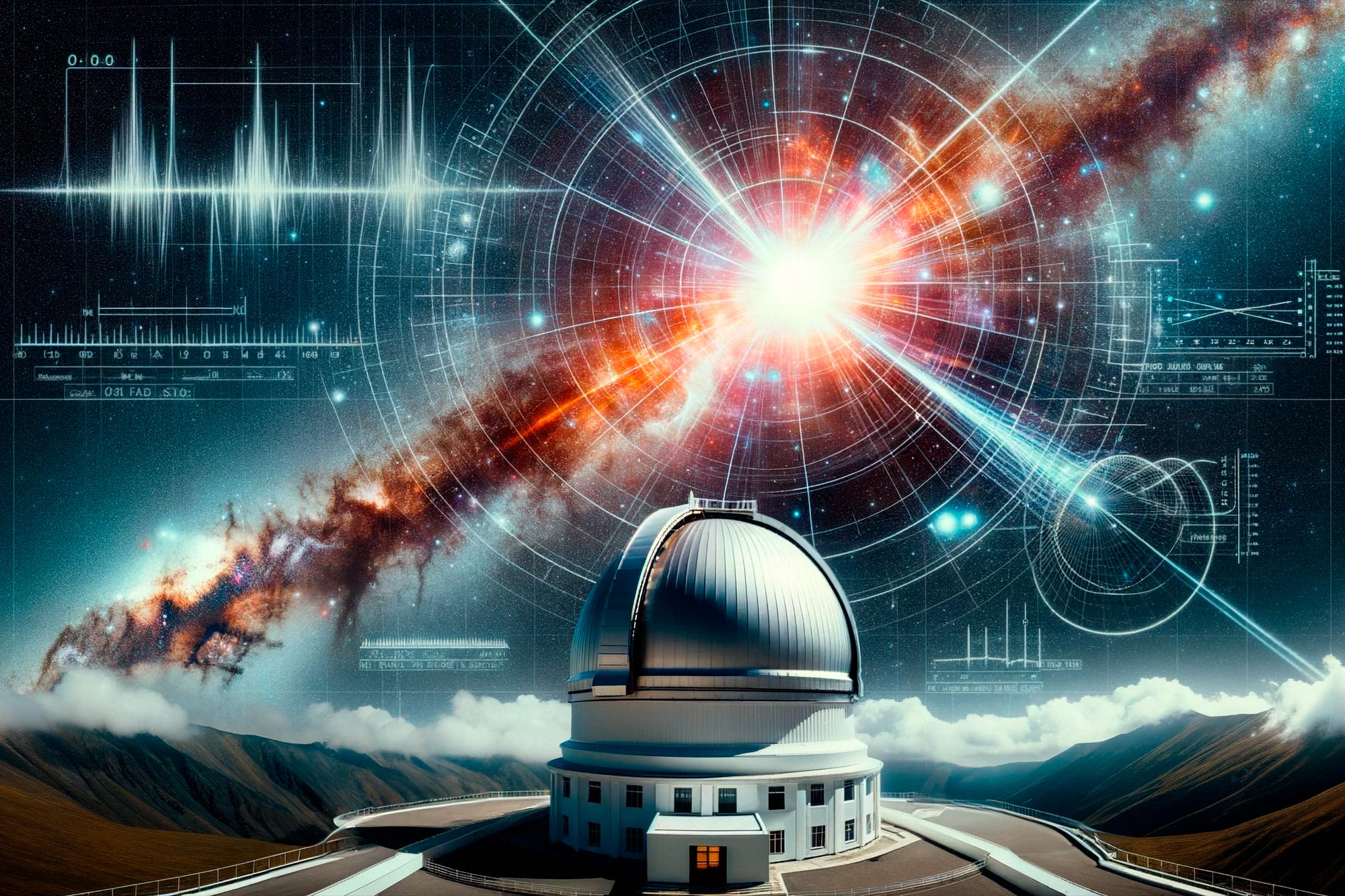Researchers Discover Most Distant and Oldest Fast Radio Burst, Revealing “Missing” Matter Between Galaxies
In a recent study published in Science, astronomers have made a groundbreaking discovery. They have identified the oldest and most distant fast radio burst (FRB) known to date, which is approximately eight billion years old. This finding confirms the ability of FRBs to uncover the presence of “missing” matter between galaxies. The study was conducted by a global team of scientists led by Dr. Stuart Ryder from Macquarie University and Associate Professor Ryan Shannon from Swinburne University of Technology.
The discovery surpasses the team’s previous record by 50 percent. It not only confirms the existence of fast radio bursts as a means to measure the intergalactic matter, but also provides valuable insights into the structure of the Universe that can be explored further with advancements in telescopic technology.
The research paper, published in Science, details the team’s exploration of the most ancient and distant fast radio burst ever detected. The burst, originated in a group of two or three merging galaxies, aligns perfectly with current theories regarding the origin of fast radio bursts. Furthermore, the team demonstrates that eight billion years is the limit of our current telescopes to accurately detect and locate fast radio bursts in space.
The detection and significance of the burst:
On June 10, 2022, the CSIRO’s ASKAP radio telescope located on Wajarri Yamaji Country captured a fast radio burst of immense proportions. The burst, equivalent to the total energy emitted by our Sun over 30 years and lasting just milliseconds, was precisely determined and traced back to its source by utilizing ASKAP’s array of dishes. The team then employed the European Southern Observatory’s Very Large Telescope (VLT) in Chile to search for the source galaxy. The observatory found that the burst originates from a galaxy that is older and more distant than any other fast radio burst discovered thus far. Moreover, the galaxy seems to be part of a small group of merging galaxies.
This particular fast radio burst, named FRB 20220610A, reinforces the concept first introduced by Australian astronomer Jean-Pierre ‘J-P’ Macquart in a Nature paper published in 2020. Macquart’s concept postulates that the more distant a fast radio burst is, the more it reveals about the intergalactic matter. This relation, known as the Macquart relation, was supported by this recent discovery, proving its validity in the farthest regions of the Universe.
Fast radio bursts and their significance in unraveling the structure of the Universe:
Approximately 50 fast radio bursts have been identified to date, nearly half of which were discovered using ASKAP. The authors of the study predict that thousands more can be detected across the sky, including those from even greater distances. These massive bursts of energy, although their origins remain unknown, can aid in the detection of matter located between galaxies, thereby providing crucial knowledge about the organization of the Universe. Associate Professor Shannon emphasizes the abundance of fast radio bursts in the cosmos and the possibility of using them to gain a deeper understanding of intergalactic matter with the help of improved telescopes. The SKA telescopes currently under construction in Western Australia and South Africa, along with ESO’s Extremely Large Telescope in Chile, will play a vital role in the comprehensive study of fast radio bursts and their source galaxies.
A collaborative effort and future prospects:
This pioneering research project involved contributions from multiple institutions worldwide, including ASTRON (Netherlands), Pontificia Universidad Católica de Valparaíso (Chile), Kavli Institute for the Physics and Mathematics of the Universe (Japan), SKA Observatory (UK), Northwestern University, UC Berkeley, and UC Santa Cruz (USA). Notable Australian participants include Macquarie University, Swinburne University of Technology, CSIRO, ICRAR/Curtin University, ASTRO 3D, and the University of Sydney. The study’s findings have significant implications for estimating the mass of the Universe, as current methods are yielding conflicting results that challenge the standard model of cosmology.
Telescope infrastructure and future endeavors:
The CSIRO’s ASKAP radio telescope, located at the Murchison Radio-astronomy Observatory in Western Australia, is currently at the forefront of fast radio burst detection and location. Meanwhile, the international SKA Observatory, consisting of two radio telescopes – SKA-Low in Western Australia and SKA-Mid in South Africa – is currently under construction. ASKAP’s capabilities will be surpassed by these new telescopes, allowing astronomers to detect even older and more distant fast radio bursts. Additionally, the Extremely Large Telescope, currently being built by ESO in the Chilean desert, will contribute to the study of source galaxies and provide images that are 15 times sharper than those produced by the Hubble Space Telescope.
To learn more about this groundbreaking research, read the full paper titled “A luminous fast radio burst that probes the Universe at redshift 1” in Science.


